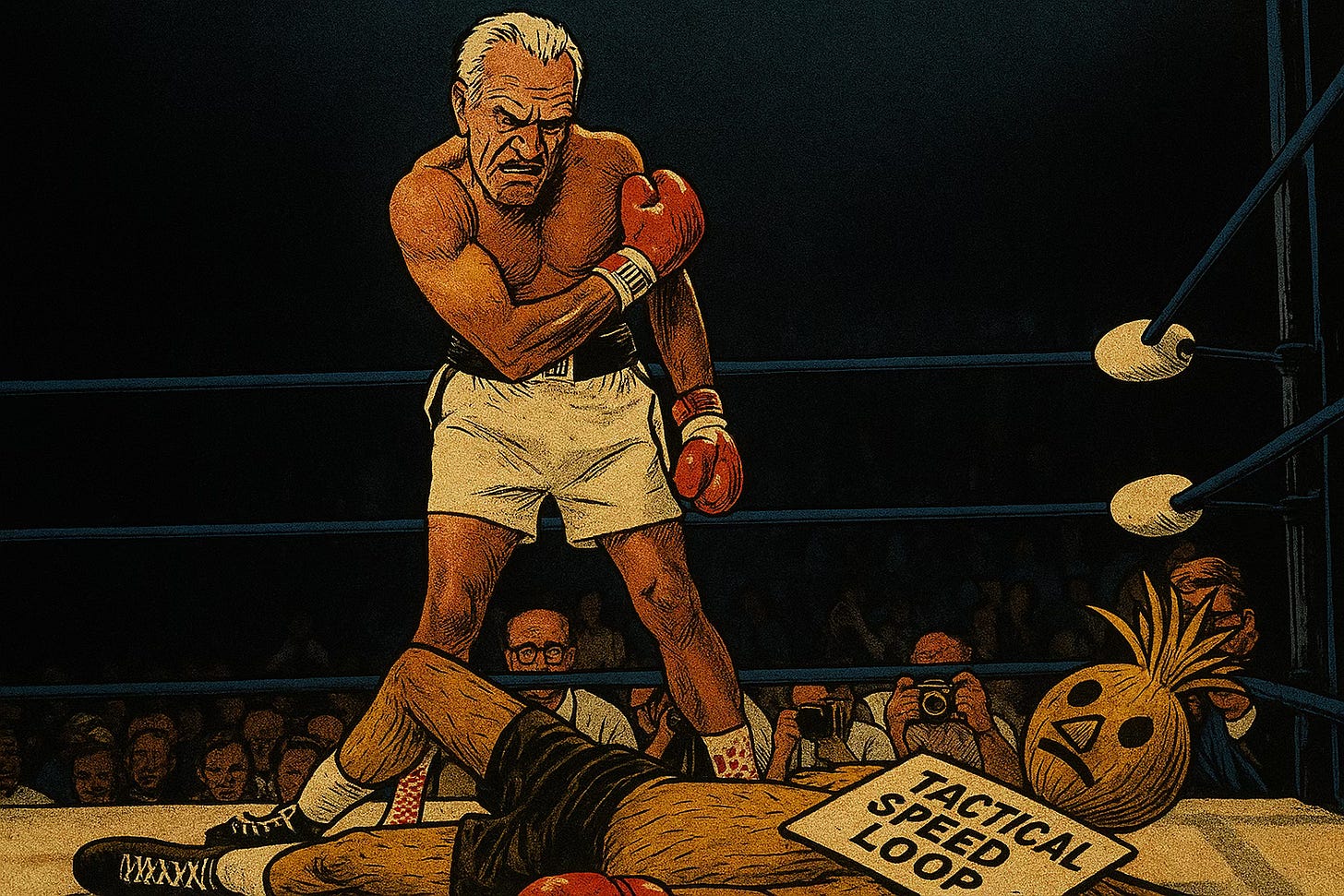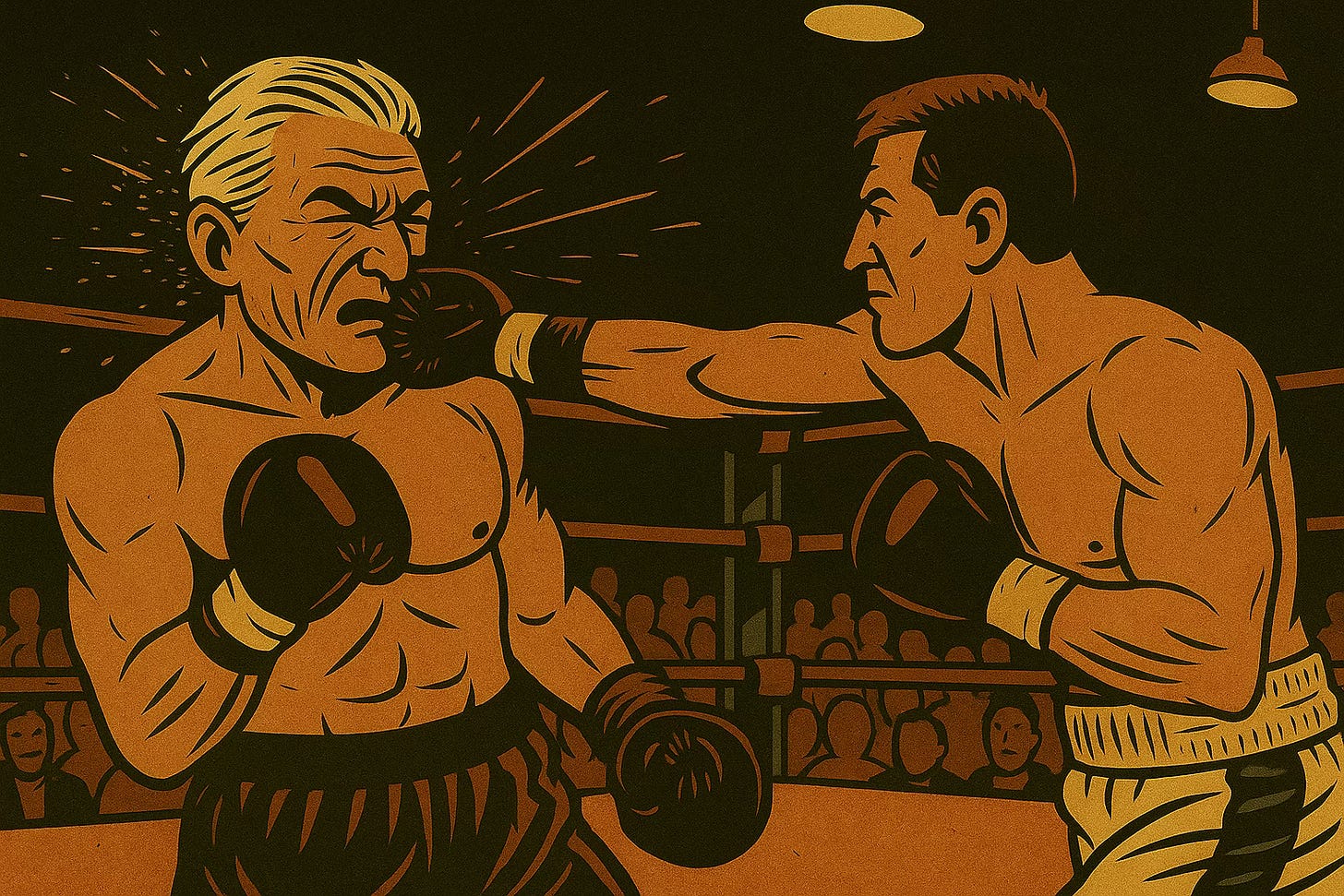The OODA Loop Trap: How Misunderstanding Boyd Becomes Your Greatest Advantage
Mastering Orientation While Others Chase Speed Is the Strategic Edge
ORIENTATION RESET
Misunderstanding John Boyd is not merely an academic error; it is a systemic vulnerability. Misinterpretations of Boyd's authentic work, especially the OODA ‘loop’ sketch, aren't just conceptual mistakes; they are operational liabilities. In an` article titled "The OODA Parasite: How Trump Turned a Brilliant Expedient Combat Theory into a Machine for Enduring Institutional and Moral Decay," the author demonstrates precisely this breakdown. The piece does not offer a critique of Boyd; it provides a case study of the misapplication of his ideas. And that misapplication is exploitable.
Organizations, institutions, and leaders who operate on the author's interpretation of the OODA ‘loop’ are easy to disrupt, manipulate, and defeat. Why? Because they confuse a surface understanding of OODA with the systemic reality. They see speed, but they miss Orientation. They see complexity, but they miss feedback. They see noise, but they miss analysis and synthesis. That's precisely the advantage you want in adversaries. Let's examine exactly how this misreading collapses under its contradictions.
OODA ‘Loop’ Sketch Is a Descriptive Abstraction, Not a Moral Script
The author opens by stating:
"Trump was built for the loop. No doctrine necessary. Just reflex. He parasitizes Orientation, thrives on confusion, and treats moral stability as expendable."
This is a projection, not a diagnosis. The OODA "loop" sketch is not a doctrine or ethical guide. It is a descriptive framework for how humans adapt under pressure. To blame it for the behavior of any particular actor is to confuse a descriptive abstraction with motive.
The fallacy the author has decided to use here is the straw man. Boyd's work is not a justification for moral collapse; it is an illustration of understanding dynamic competition.
Orientation Is the Root System of the OODA ‘Loop’ Sketch
The author implies:
"Boyd designed the loop for pilots who needed to survive air combat. Trump applied it to politics and governance without any ballast of shared norms or institutional trust."
This statement is a pervasive trope that misrepresents the structural heart of the authentic OODA ‘loop’ concept. Orientation is not a speed dial. It is an organic, living root system through which perception, belief, and understanding shape how we sense, decide, act, and learn to adapt. Boyd describes Orientation as the cognitive operating system that encompasses our genetic heritage, cultural traditions, previous experiences, new information, and analysis and synthesis. It is what allows one to reframe reality faster than the adversary.
The fallacy the author has chosen to use here is the false dichotomy, setting tempo and coherence in opposition when, in fact, Boyd has shown they are interdependent. Speed is not the goal. Rapid reorientation is.
The ‘Loop’ Scales: From Tactics to Statecraft
The author claims:
"Boyd belongs in the cockpit or in emergency management headquarters, where rapid adjustments in chaotic situations save lives. He does not belong at the center of statecraft."
This statement is a complete misreading of Boyd's trajectory, whose work evolved explicitly toward institutional and strategic levels. In several of Boyd's briefings, he discusses the collapse of empires, the internal entropy of bureaucracies, and how feedback failure leads to systemic disintegration.
The fallacy the author has decided to use here is a category error: assuming the OODA ‘loop’ is confined to an origin context. In fact, Boyd moved well beyond air-to-air combat into political, cultural, and cognitive terrain.
The ‘Loop’ Requires Trust, Not Exploits
The article states:
"Trump applied it to politics and governance without any ballast of shared norms or institutional trust… That was OODA as structural capture."
This confuses the OODA' loop' as a descriptive abstraction of adaptation with an endorsement of the behaviors it happens to reveal or expose. Boyd's OODA ‘loop’ sketch is deeply dependent on implicit guidance and control, shared mental models, trust, and cohesion. Without these, no team or system can operate at high tempo.
The fallacy the author has decided to use here is guilt by association: attributing bad outcomes to the OODA' loop' sketch because certain actors operated within it. But Boyd's entire framework teaches how systems fail when Orientation is corrupted and feedback loops collapse.
Boyd Built for Renewal, Not Decay
Near the end, the author writes:
"What matters now is not speed. It is the return of rhythm. Not disruption, but the ability to restore what frays. Some things require a slower clock."
Ironically, this is the very essence of what Boyd argued. In Destruction and Creation, Boyd doesn't glorify speed for its own sake, he teaches analysis and synthesis: the disciplined destruction of obsolete mental models, followed by the recombination of functional elements into something coherent, adaptive, and new.
That's what the snowmobile is about. It's not poetry. It's a practical weapon. Boyd rips the treads from a toy tank, the handlebars from a bicycle, the motor from a boat, and the skis from a downhill skier on the slopes. None of it is elegant; all of it is essential. It's cross-domain synthesis under pressure. Stability gives you traction. Change gives you thrust. The snowmobile gives you both if you're willing to tear apart what no longer works and reassemble what does.
The fallacy the author has chosen to employ here is romantic idealism. This assumes that slowness is intrinsically virtuous and speed is inherently corrosive. But Boyd didn't care about tempo as a virtue or vice. He cared about adaptability. Not rhythm or speed, but the ability to reorient when it counts.
RECLAIMING AUTHENTICITY, REBUILDING ORIENTATION
Boyd's OODA ‘loop’ sketch is not a formula for entropy. It is a system for recognizing it, countering it, and surviving it.The author of "The OODA Parasite" has constructed a fragile caricature, confusing moral projection with strategic clarity.
The fallacies deployed—straw men, false dichotomies, guilt by association, category errors, romantic idealism—don't invalidate Boyd. They validate his warning: systems that fail to reorient will collapse.
If your competitors are operating off this interpretation of Boyd, let them. Their misreading is your advantage.
They will move linearly. You will move adaptively.
They will defend positions. You will exploit mismatches.
They will collapse under friction. You will metabolize it.
Avoid the linear traps that your misinformed competitors will fall into.
Let them chase steps and templates while you master the authentic OODA ‘loop’ sketch and reorient for real!










Another fantastic piece. I have not read anyone who takes Boyds work even deeper and makes me rethink a lot of my own thoughts on his work. Fantastic!
The author’s article conflicts with the views he held 25 years ago. Back then he wrote that the U.S. Army interpreted the OODA loop too narrowly. Now, he is guilty of the same thing. This is another great piece exposing the elements of the 5T framework.